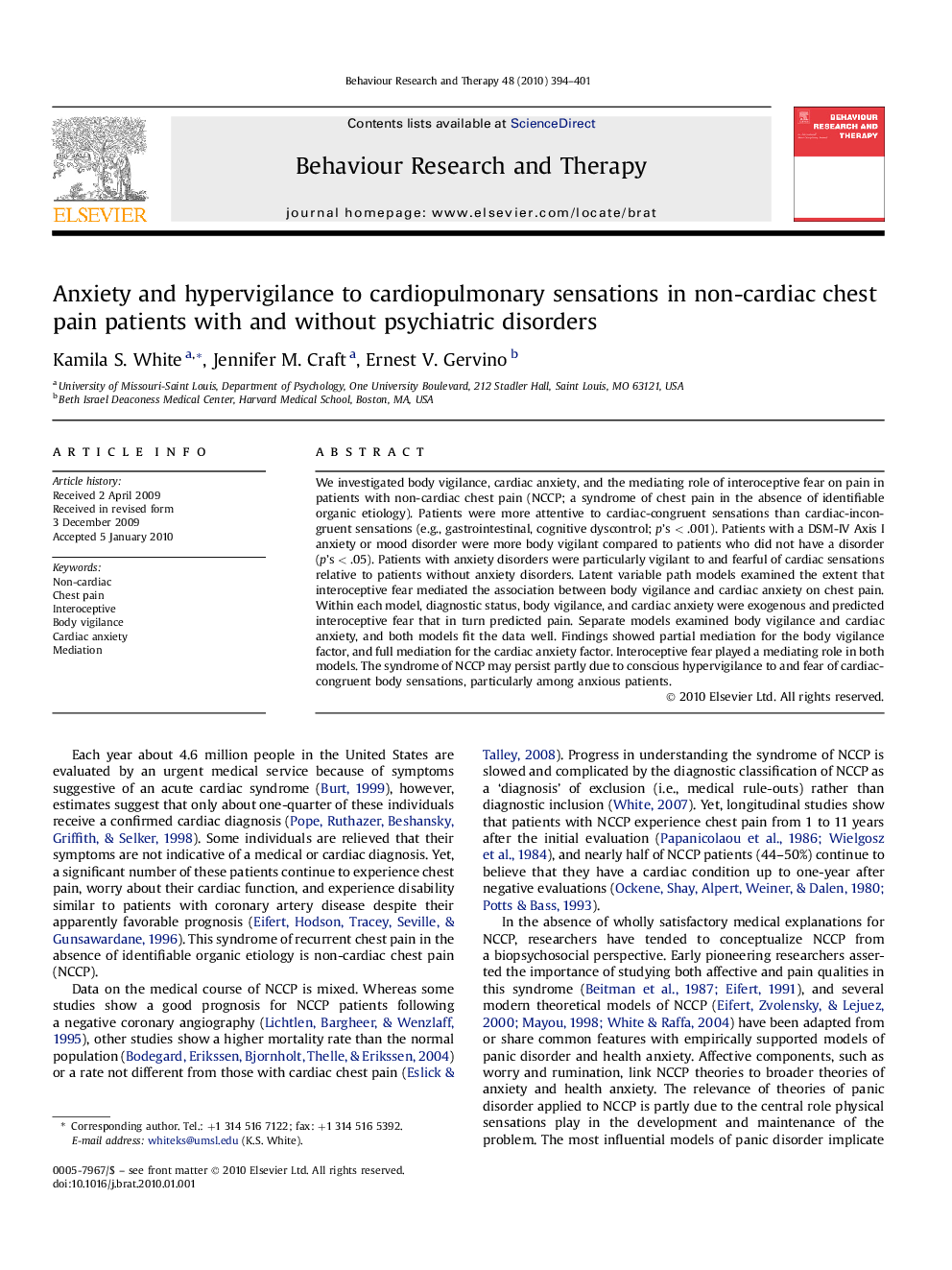| Article ID | Journal | Published Year | Pages | File Type |
|---|---|---|---|---|
| 10444672 | Behaviour Research and Therapy | 2010 | 8 Pages |
Abstract
We investigated body vigilance, cardiac anxiety, and the mediating role of interoceptive fear on pain in patients with non-cardiac chest pain (NCCP; a syndrome of chest pain in the absence of identifiable organic etiology). Patients were more attentive to cardiac-congruent sensations than cardiac-incongruent sensations (e.g., gastrointestinal, cognitive dyscontrol; p's < .001). Patients with a DSM-IV Axis I anxiety or mood disorder were more body vigilant compared to patients who did not have a disorder (p's < .05). Patients with anxiety disorders were particularly vigilant to and fearful of cardiac sensations relative to patients without anxiety disorders. Latent variable path models examined the extent that interoceptive fear mediated the association between body vigilance and cardiac anxiety on chest pain. Within each model, diagnostic status, body vigilance, and cardiac anxiety were exogenous and predicted interoceptive fear that in turn predicted pain. Separate models examined body vigilance and cardiac anxiety, and both models fit the data well. Findings showed partial mediation for the body vigilance factor, and full mediation for the cardiac anxiety factor. Interoceptive fear played a mediating role in both models. The syndrome of NCCP may persist partly due to conscious hypervigilance to and fear of cardiac-congruent body sensations, particularly among anxious patients.
Keywords
Related Topics
Health Sciences
Medicine and Dentistry
Psychiatry and Mental Health
Authors
Kamila S. White, Jennifer M. Craft, Ernest V. Gervino,
